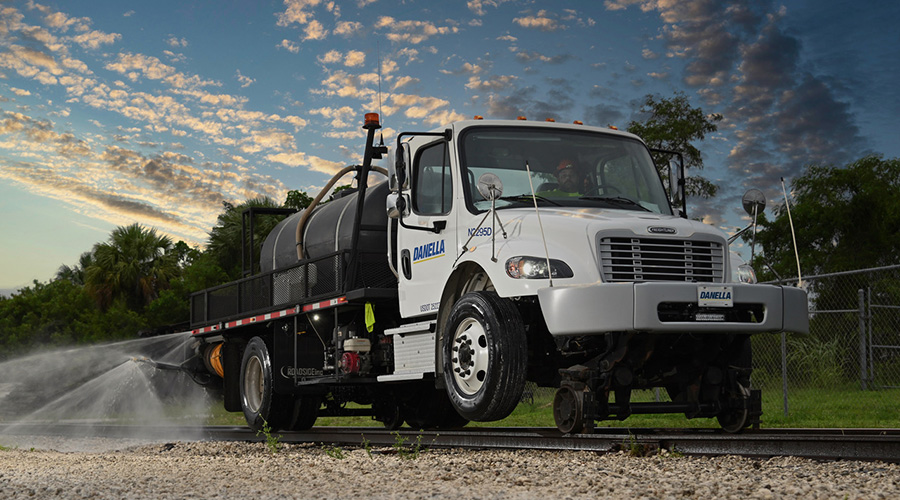Stay updated on news, articles and information for the rail industry
October 2024
Rail News: MOW
Fluctuating production, demand and specifications keep wood-tie producers on their toes
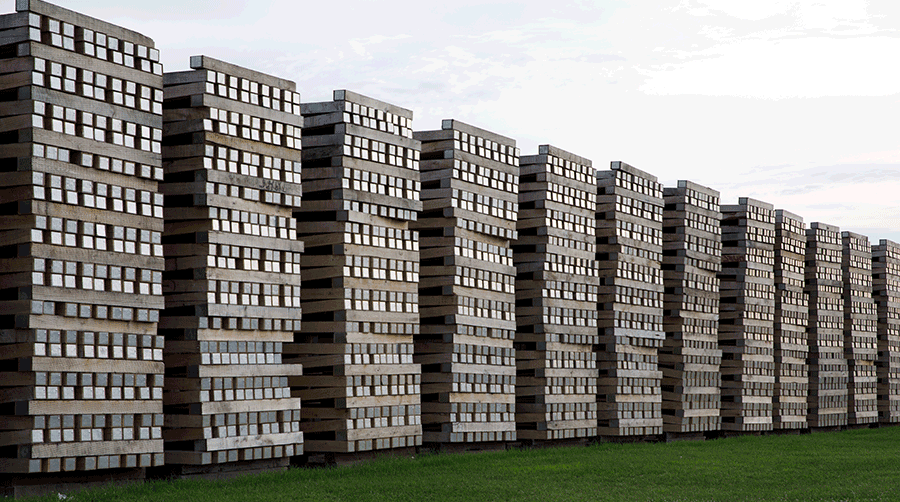
Compiled by Bridget Dean, Associate Editor
It’s catch-up time in the wood crosstie supply market. Tie producers and hardwood mills are making headway after a period of high demand from railroads over the past several years, partly due to a low demand for other hardwood products.
Wood-tie production is up over 20% in just over a year said Railway Tie Association Executive Director Nate Irby in an email.
“Purchases have also followed an upward trend, which is highly encouraging,” he said.
Following sharp price fluctuations after the pandemic, there is a lower demand this year for other hardwood products such as lumber, flooring and road mat timbers this year. So, it’s less profitable to produce those products, Irby explained.
So much so, that for some sawmills, wood-tie demand has become a contributing factor to their survival in the past 12 months.
“Hardwood sawmill production volume is near concerningly historical lows,” said Irby, citing a hardwood industry market report. “While log supply is available and not the sole influencer, prolonged weak hardwood lumber demand is driving the overall production downfall.”

Hardwood log processing is typically optimized to create multiple products, which enables sawmills to diversify their product offerings and profit from multiple industries. But now, a number of mills are not generating profits from their optimization processes and instead are making difficult decisions, Irby said.
For example, some have ceased all production for the time being, opting to wait out the lull in demand for hardwood products.
Despite such cutbacks in raw supplies, most railroads are approaching ideal wood-tie inventory levels for their next track maintenance cycle, Irby said. And they’re doing so in a year of mostly high capital budgets, as federal and state grant awards for freight- and transit-rail projects have prompted the need for more ties as part of track construction, reconstruction and expansion work.
However, some railroads have not been able to follow through with planned projects involving tie installations or replacements, even if they have the available dollars and tie inventory. Various reasons such as severe and uncooperative weather, continuous labor shortages and corridor restrictions have hampered projects in some locations, said Irby.
“We continue to monitor those backlogs, as deferred maintenance is a nightmare to have to overcome,” he said.
The supply chain needs the latest market intelligence to remain properly aligned with material flow so suppliers can sustainably provide ties to their railroad customers, Irby stressed.
Meanwhile, wood-tie specifications have undergone significant changes within the past year — some of which haven’t yet been announced — involving green-tie grading, considerations of knots, checks and splits, and preservative and chemical treatments. How those changes will impact railroads and wood-tie production isn’t yet known, Irby said.
The RTA is conducting two large phases of ongoing research that incorporates full-size ties with various combinations of wood species, treatment type, chemistry and other factors. The association provides evaluation reports on the research at its annual conference.
“A potential third phase [of research] is being proposed, which may help answer several of the recent concerns of the wood producers and railroad customers, alike,” said Irby.
He encourages producers to download the RTA Tie Grading Guide smartphone app, which shares the latest wood-tie specifications.
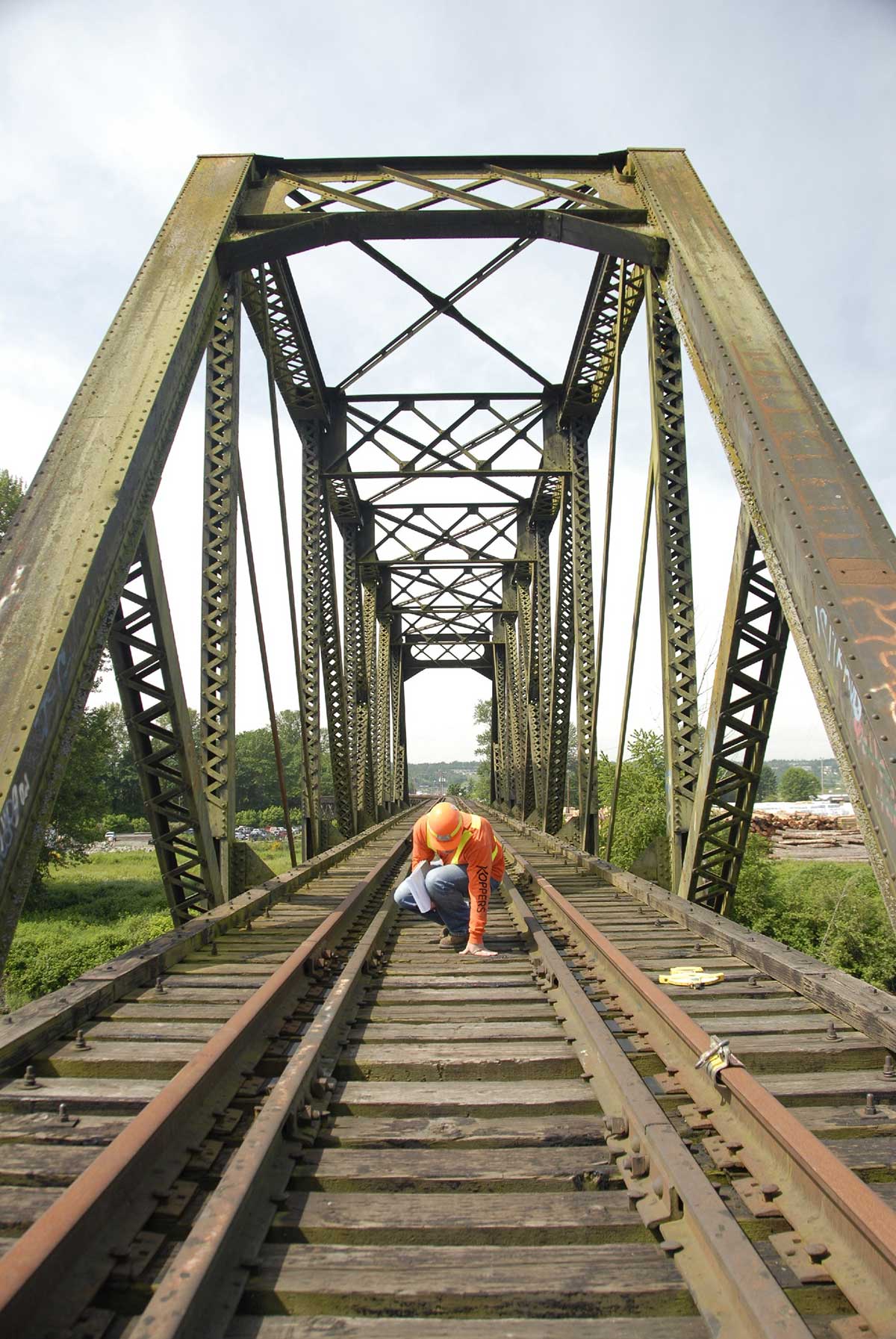
Wood is the raw material for 90% of the ties already installed in tracks and those currently being sourced, with the remainder produced from concrete, composites or other materials.
“Wood tells a great environmental story, as it is a natural and renewable material,” said Irby. “The forest growth-to-harvest ratio is six to one, and the carbon sequestration of wood, from cradle to grave, is phenomenal compared to alternative products that take much higher levels of embodied energy just to be created and are neither natural nor renewable in comparison to wood.”
With such advantages to exploit, wood-tie suppliers are hopeful that wood will continue to dominate the market. They’re also trying to be optimistic that there will be a steadier flow of wood through the tie supply chain.
To gauge the state of that supply chain, Progressive Railroading reached out to several tie suppliers for updates on their sales prospects, initiatives and focuses for the remainder of 2024 and 2025. Emailed responses from three companies follow.
Stella-Jones: Built on broad network
A leading manufacturer of wood ties in North America, Stella-Jones supplies up to 10 million pressure-treated wood ties per year. The company’s ties and other timber products support Class Is, regionals, short lines and industrial products outside of the rail industry, Stella-Jones officials said.
The manufacturer provides mixed hardwood and oakwood treated ties with creosote, borate and copper naphthenate for railway bridges and grade crossings, maritime and foundation pilings, and construction timbers. The company also offers customized wood treatment services.
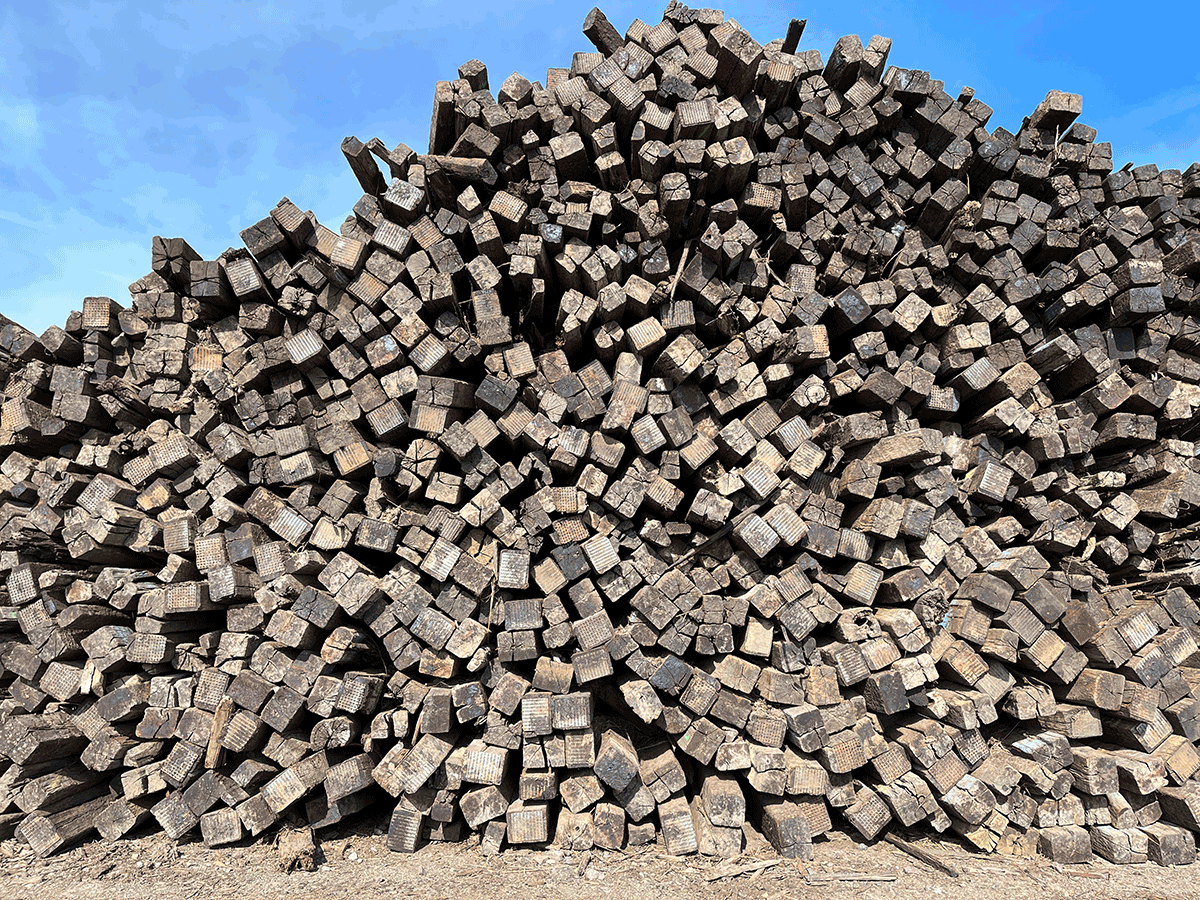
Stella-Jones operates over 40 wood-treating facilities in the United States and Canada and has a network of over 1,000 sawmills. Its continental network allows the company to offer broad, economical coverage using rail, truck and maritime transport for its products, company officials said.
Combining large wood-tie production capacity and long-term relationships with numerous wood suppliers ensures Stella-Jones has a constant and ample supply of raw material, particularly in times of emergency need, they said.
Koppers Inc.: Signature services
For Koppers Inc., tie production has been robust as demand for wood-tie products remains strong, said company officials.
“Uncontrolled inflationary costs have not subsided, but steadied, which is keeping competitive pricing strong as well,” they said.
The largest shareholder of the North American market for treated timbers, Koppers provides creosote-treated wood product manufacturing not only for ties used on tracks, but also for the maintenance and construction of railroad bridges, company officials said.
“Koppers Railroad Structures offers full-service inspection, design, repair, in-place treatment and construction of timber, steel and concrete railroad bridges across the United States and Canada,” they said. “As one of the few companies that specializes in and services all three types of bridge structures, we offer an all-in-one resource for our customers’ inspection, rehabilitation and repair requirements.”
Since 1954, Koppers has been extending the service lives of timber bridges through detailed inspections and the implementation of specialized wood preservations. The company considers those repairs and inspections to be one of its signature services.
Koppers’ specialized tools and strategies developed from years of experience allow repair crews to efficiently replace all the components in the timeless structures, including the treated wood ties, company officials said.
“Our product roster also includes bonded rail joints and track components for freight, transit, high-speed and heavy haul needs,” they said. “We offer railroad services, including engineering, design, repair and inspection of railroad bridges within our North American Class I customer base.”
Koppers’ services for steel and concrete railroad bridges include work to correct deterioration of steel bracing systems, stringers, floor beams, girders, trusses and beam spans. Cast-in-place, grouting, epoxy injection, pre-cast blocks and polymer bearing pads are just a few of the repair techniques Koppers crews use to correct defective concrete bridges while prioritizing track interruptions.
“Our repair techniques, combined with a strict adherence to safety, ensures each job is done right,” company officials said.
Omaha Track: Sustainability for over 40 years
Founded on the principles of sustainability long before it became a buzzword, Omaha Track is a family-owned, entrepreneurial company with over four decades of experience in recycling and repurposing aged-out and damaged railroad ties.
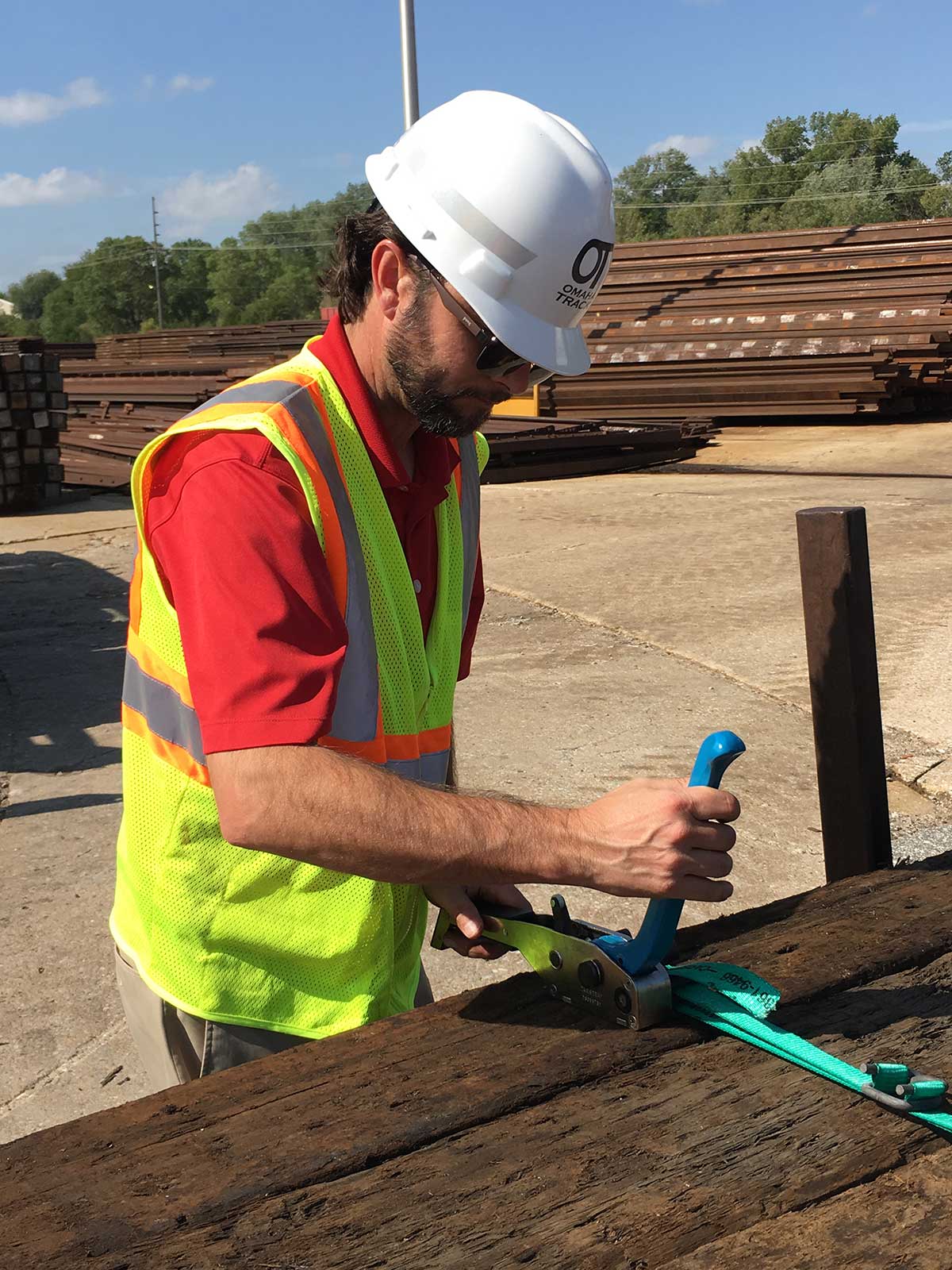
The company — which provides both terminal and rail services — is an industry leader in sustainable disposal and repurposing of railroad ties, Omaha Track officials said.
Annually, the company processes over 3 million expired wood ties across the United States. The company collects the aged-out wood ties from all types of railroads, ranging from Class Is to the smallest short lines.
Ties with remaining service life — which account for about half of the ties Omaha Track collects — are graded, bundled and resold for landscaping applications.
Meanwhile, lower-quality, damaged and otherwise depleted ties are turned into chips for alternative energy uses such as co-generation fuel for power plants and the cement industry.
Omaha Track’s tie processing facilities are located across the United States, with key locations in Illinois, Wisconsin and Nevada. Its large network of facilities enables Omaha Track to recover and process ties from railroads no matter the location, and to serve customers and retailers nationwide, company officials said.
Ultimately, the company is committed to helping railroads and other industries that use wood ties and their byproducts find effective and sustainable ways to repurpose railroad ties.
Email questions or comments bridget.dean@tradepress.com.
Keywords
Browse articles on wood crossties wood-ties Stella-Jones Koppers Inc. Omaha Track railroad wood-tiesContact Progressive Railroading editorial staff.


 2025 MOW Spending Report: Passenger-rail programs
2025 MOW Spending Report: Passenger-rail programs
 Gardner steps down as Amtrak CEO
Gardner steps down as Amtrak CEO
 Guest comment: Oliver Wyman’s David Hunt
Guest comment: Oliver Wyman’s David Hunt
 Women of Influence in Rail eBook
Women of Influence in Rail eBook
 railPrime
railPrime






